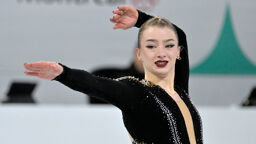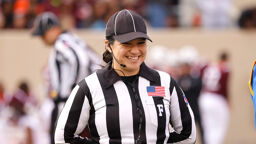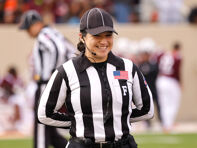Canada has announced it will now allow same-sex teams to compete in the ice dance and pairs figure skating competitions at the most elite levels of the sport.
Skate Canada — the national governing body for figure skating — has changed the rules for on-ice teams from one man and one woman to “two skaters.”
The rule change will affect only domestic competitions — that is, competitions that include only skaters from Canada. That ostensibly includes Canada’s national championships. The International Skating Union has not approved such a change, and it’s not likely to move in that direction in the near future.
Still, Skate Canada is full-speed ahead:
“By updating the definition of team, many individuals in the figure skating community in Canada will have new opportunities to embrace the sport,” Karen Butcher, president of Skate Canada, said in a statement carried by the CBC. “This change is about removing barriers to participation in skating, and we believe it will have a significant impact in ensuring all gender identities are recognized and accepted equally and without prejudice.”
Certainly some people will laud the change. Various advocates and advocacy groups like Athlete Ally are opposed to any medical transition requirements for athletes looking to compete in the sex category that doesn’t correspond to their sex.
Others recognize the clear and obvious distinctions across elite levels of sports, and on average, that exist between the two sexes.
It’s hard to believe male skaters will lose their spots in pairs or ice dance due to this change as — across elite levels and on average — male athletes have a distinct advantage in strength (and other categories of competition) to female athletes. In both of these figure-skating categories — but in particular in pairs skating — strength is an important attribute.
The question this raises is whether female athletes will lose their spots to male athletes.
To execute some of the lifts and throws and other signature moves in the sport, having one partner who’s light in weight is also an advantage. Also, one of the two needs to be able to lift and toss the lighter of the pair.
Yet if a pair has a female athlete who’s 120 pounds, and a male athlete who’s 120 pounds, is there an inherent advantage there?
In all likelihood, yes. Again, this isn’t about transgender athletes, this is about all athletes regardless of gender identity.
On average — and this is clearly true at elite levels — male athletes have strength and speed advantages over female athletes of the same weight. It’s why sports defined by weight categories, like wrestling and powerlifting, are still separated by sex.
The other dynamic to contend with is the judging. Believe it or not, figure skating is a relatively “conservative” sport. Will judges subconsciously “punish” same-sex teams in pairs or ice dancing? It’s possible, though the figure-skating judging system that has been in place for a while has sought to eliminate biases.
The intentions of Skate Canada are noble: Create a discrimination-free zone that allows for the mixing of genders.
What will be the practical application of this rules change? We will find out in the coming years.







































